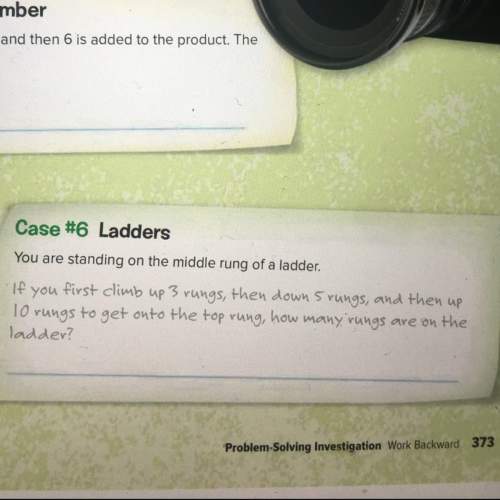
Mathematics, 24.10.2019 17:43 Astute
Consider the triangles shown. triangles v u t, u t s, and t s r are connected. sides v t, u t, t s, and t r are congruent. if mangleutv < mangleuts < manglestr, which statement is true? vu < us < sr by the hinge theorem. vu = us = sr by the hinge theorem. mangleutv = mangleust = manglestr by the converse of the hinge theorem. mangleutv > mangleuts > manglestr by the converse of the hinge theorem.

Answers: 1


Other questions on the subject: Mathematics


Mathematics, 21.06.2019 20:30, maxy7347go
Does the function satisfy the hypotheses of the mean value theorem on the given interval? f(x) = 4x^2 + 3x + 4, [−1, 1] no, f is continuous on [−1, 1] but not differentiable on (−1, 1). no, f is not continuous on [−1, 1]. yes, f is continuous on [−1, 1] and differentiable on (−1, 1) since polynomials are continuous and differentiable on . there is not enough information to verify if this function satisfies the mean value theorem. yes, it does not matter if f is continuous or differentiable; every function satisfies the mean value theorem.
Answers: 1

Mathematics, 21.06.2019 22:00, WhirlyWave
Which function in vertex form is equivalent to f(x) = x2 + 6x + 3? f(x) = (x + 3)2 + 3 f(x) = (x + 3)2 − 6 f(x) = (x + 6)2 + 3 f(x) = (x + 6)2 − 6
Answers: 1
You know the right answer?
Consider the triangles shown. triangles v u t, u t s, and t s r are connected. sides v t, u t, t s,...
Questions in other subjects:





Mathematics, 06.03.2022 07:40




Health, 06.03.2022 07:40




